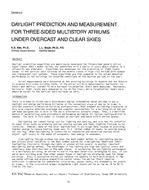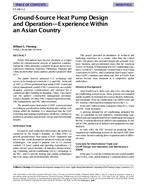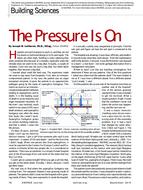The coupling of indoor air flow to the outdoor flow through large openings in buildings that allow bidirectional flow is of considerable interest for many applications. In this work, the air flow pattern has been calculated for situations in which warm air leaves a room through the upper part of the large opening and rises as a thermal plume, with and without interaction with wind. Both two-and three-dimensional CFD simulations of the velocity and temperature fields in a thermal plume agree well with the analytical models. These, in turn, are well supported by experiments. For single-sided ventilation without wind, the velocity profiles in the doorway predicted by CFD have features that are well known from experimental data but cannot be found in analytical models. With a normal incident steady wind on the opening, an increase of the convective flow is found in the three-dimensional case but not in the two-dimensional case. At the boundaries of the computation domain corresponding to the free atmosphere, a zero pressure gradient boundary condition was found to be sufficient to avoid unrealistic recirculation. By proper placement of these boundaries around a heated room, good numerical results can be achieved for a computation domain extended only a little to the outside of the room.
KEYWORDS: calculating, air flow, openings, buildings, indoor, outdoor, jets, wind, air, speed, temperature, ventilation, computers
Citation: Symposium Papers, Baltimore, MD, 1992
Product Details
- Published:
- 1992
- File Size:
- 1 file , 1.1 MB
- Product Code(s):
- D-17816


